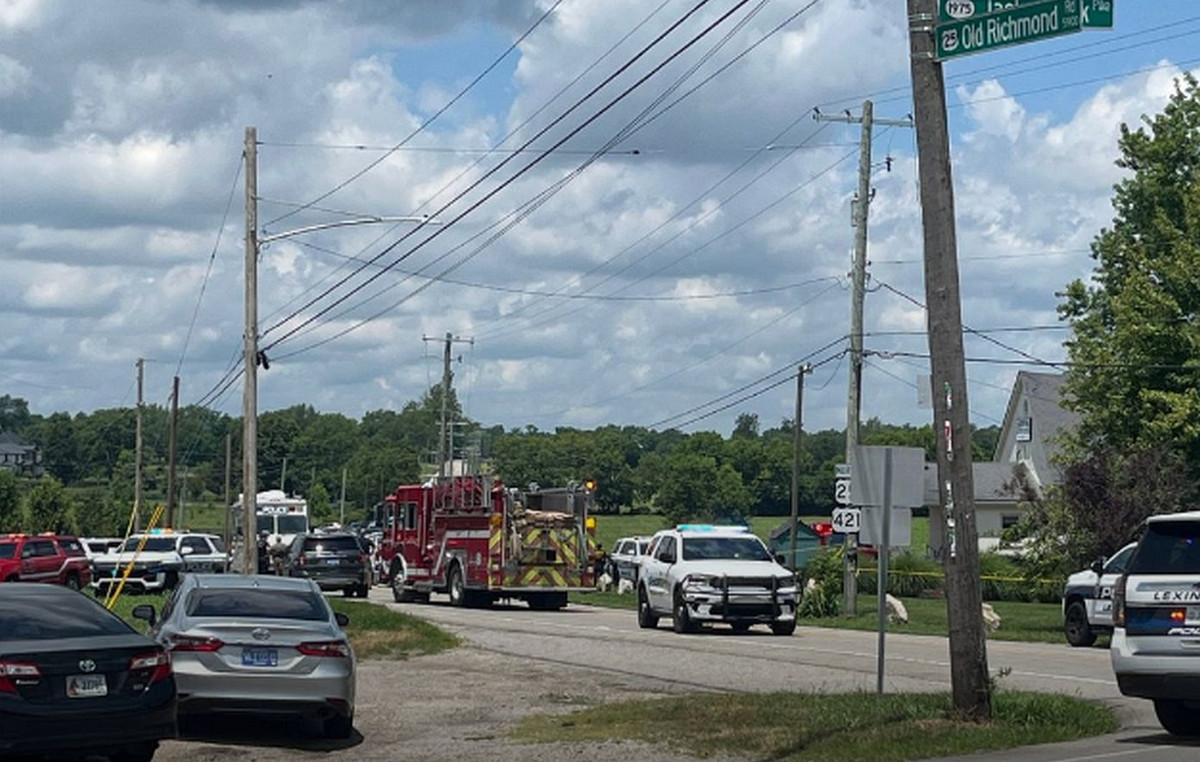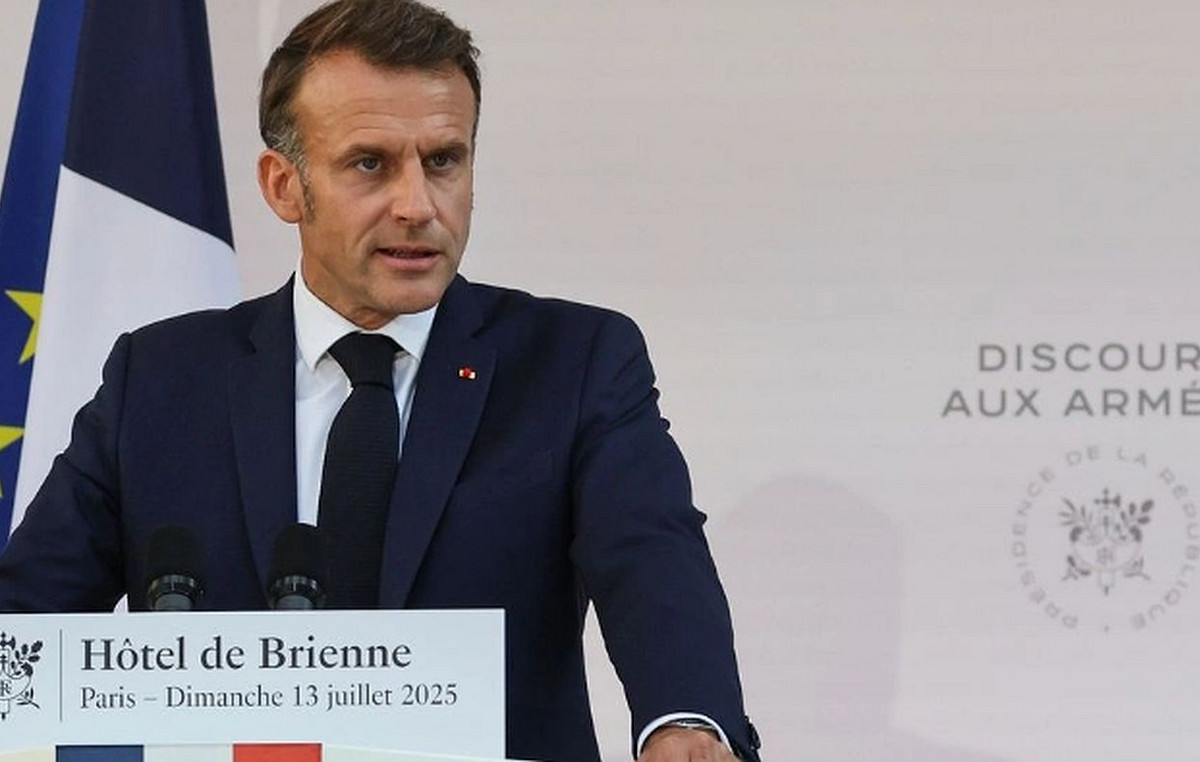After nearly a year of fighting in Gaza, Israel is stepping up hostilities with Hezbollah in Lebanon, with covert operations targeting communications devices and a fierce bombing campaign that has left hundreds dead.
The fight against Hamas has tested Israel’s military. Officials are speaking of a shortage of troops in the army; the economy is facing its biggest decline in years; and public pressure is growing for a cease-fire and hostage deal.
It is unclear whether Israel intends – or will feel compelled – to launch a ground invasion of Lebanon. But the question looms large: Can Israel take on a second front?
Since October 8, the day after Hamas’ attack on Israel, there have been regular cross-border firefights between Hezbollah and the Israeli army.
Hezbollah fired its first shots at Israel in protest against the war in Gaza, demanding a ceasefire in the country as a condition for ending its attacks.
The stakes were raised last week when Israel wounded thousands of people across Lebanon by detonating pagers and walkie-talkies used by Hezbollah. An escalation of shootings followed.
If Israel enters a full-scale war with Hezbollah, experts say it will face a much greater threat than Hamas, with associated costs.
“Hezbollah is not Hamas,” says Yoel Guzansky, a researcher at the Institute for National Security Studies (INSS) in Tel Aviv who has served on Israel’s National Security Council under three prime ministers. Hezbollah is “a state within a state” with far more sophisticated military capabilities, he told CNN .
Over the weekend, the group launched one of its deepest attacks on Israel. The Israeli military reported strikes in Kiryat Bialik, Tsur Shalom and Moreshet, near the port city of Haifa, about 40 km (25 miles) south of the border.
The cross-border exchange over the past year has already led to the displacement of more than 62,000 residents from their homes in northern Israel and the deaths of 26 Israeli civilians and 22 soldiers and reservists, according to Israeli media.
Before the weekend escalation, there were more than 94,000 people displaced and more than 740 dead on the Lebanese side, including about 500 Hezbollah fighters, according to Reuters. Since Monday (23) alone, Israeli strikes have killed at least another 558 people and displaced 16,500, according to Lebanese authorities.
Here are some of the main challenges Israel faces in a possible broader conflict with Hezbollah:
A stronger enemy
The Shiite Islamist group, Iran’s closest regional partner, has not only boasted more sophisticated weaponry in the past year but also has strategic depth through its allies and partners across the Middle East, including Iraq and Yemen.
While Israel’s military capabilities have improved since its last war in Lebanon in 2006 – when the Jewish state did not yet have its Iron Dome defense system – so has Hezbollah’s arsenal.
Military analysts estimate Hezbollah has between 30,000 and 50,000 soldiers, but earlier this year its leader, Hassan Nasrallah, said it had more than 100,000 fighters and reservists. The group is also believed to have between 120,000 and 200,000 rockets and missiles.
Its greatest military asset is long-range ballistic missiles, of which it is estimated to possess thousands, including 1,500 precision missiles with a range of 250-300 kilometers.
During the weekend attack, Hezbollah said it targeted Israel’s Ramat David air base with Fadi 1 and Fadi 2 missiles, long-range weapons believed to have been used for the first time. The base is located about 50 kilometers (30 miles) from the Lebanese border.
The Israeli military did not respond to questions about whether the base had been hit. Israeli emergency services said three people were wounded in the strikes.
Behnam Ben Taleblu, a senior fellow at the Washington-based think tank Foundation for Defense of Democracies (FDD) who focuses on Iran and its allies, said that “the warhead weight of these projectiles is reminiscent of the heavy Burkan IRAM (Improved Rocket Assisted Munition), first introduced last winter against Israel by Hezbollah, but with considerably greater range.”
Hezbollah’s attacks using these projectiles “are likely a way for the group to try to save face without losing its head after the communications attacks and the targeting of senior leaders by Israel last week,” Ben Taleblu told CNN .
Orna Mizrahi, a Hezbollah expert at the INSS, said much of Israel’s ability to wage a two-front war depends on US support.
“The IDF (Israeli Defense Forces) can fight on both fronts for a long time, and we have the capacity to do so if we have American ammunition,” Mizrahi said, adding that if a full-scale war were to occur, it would be the United States. The United States is likely to intervene to support Israel.
Furthermore, Israel has a huge intelligence advantage, most evident in last week’s bold attacks on Hezbollah communications.
An oppressed army
Israel is a small state and its military forces are not unlimited. As it prepares for a possible second war, the IDF is diverting some of its main divisions from Gaza to its northern border.
“When you’re fighting on more than one front, you can’t invest a lot on all fronts,” Mizrahi said. “So it’s going to be a different way of fighting.”
Israeli Defense Minister Yoav Gallant said last week that “the center of gravity is moving north” and that “forces, resources, energy” are now being moved.
Among these units is the elite Israeli 98th Division. Also known as Utzbat HaEsh, this paratrooper division is believed to be made up of between 10,000 and 20,000 soldiers, according to Israeli media.
Guzansky said the diversion of resources to Lebanon did not mean the Gaza war was over, but rather that Netanyahu felt compelled to deal with the northern front amid growing domestic pressure to facilitate the return of evacuees from the area.
Analysts and military officials cited by Israeli media have also repeatedly stated that the IDF is suffering from shortages.
At the start of the war against Hamas, the army recruited some 295,000 reservists in an effort to increase its strength. But that number is proving insufficient.
Fighting in Gaza and elsewhere has also taken its toll on soldiers, with 715 killed so far since October 7, including in the north.
“This is the longest (war) of its kind in Israel’s history, longer than the War of Independence in 1948,” Guzansky said, adding that this is the goal of Hezbollah and Iran, “to gradually weaken Israel.”
“Firing rockets every day, on a low scale, and occupying the IDF, overwhelming the IDF,” he said.

An economy in decline
Israel’s economy has been one of the biggest casualties of the war in Gaza, having been hit hard since the first days of the October 7 attack. Thousands of businesses have suffered as a result of reservists abandoning their civilian lives to take up arms, and the country’s economy is shrinking at an alarming rate.
“It is devastating for the Israeli economy, for Israeli society,” Guzansky said, adding that the repercussions will last for years.
Of the 38 countries in the Organization for Economic Cooperation and Development (OECD), Israel recorded the biggest economic slowdown between April and June this year, according to the organization in its quarterly report.
According to OECD data, the Israeli economy contracted by 4.1% in the first months of the war, and continued to contract, albeit at a slower pace, during the first and second quarters of 2024.
The economic contraction comes at a time when Israel’s military spending is soaring.
Earlier this year, Amir Yaron, governor of the Central Bank of Israel, warned that the war is likely to cost Israel up to 253 billion Israeli shekels ($67 billion) between 2023 and 2025, Israeli media reported.
This represents nearly 13 percent of Israel’s GDP, in addition to normal military spending, which has been between 4.5 percent and 6.5 percent of GDP annually, according to World Bank data.
The escalation of the conflict has also affected Israel’s credit rating, increasing the country’s debt, which has been downgraded by several rating agencies since the start of the war.
In a statement last month, credit rating agency Moody’s warned that an all-out war with Hezbollah or Iran could have “significant credit consequences for Israeli debt issuers.”
A crisis of legitimacy
A second front, especially one that could be far more damaging to Lebanon than to Israel, could be the final straw for many countries already critical of Israel’s war in Gaza, experts say.
The global sympathy that Israel received immediately after the October 7 attack has turned into harsh criticism due to Israel’s devastating response, which now faces charges of war crimes and genocide in international courts, which Israel vehemently denies.
Domestically, although Israelis demonstrated a greater appetite for fighting at the start of the Gaza war, polls show that domestic support has waned in recent months.
As for support for a war against Hezbollah, Israelis appear divided on the issue.
A poll published in July by the Israel Democracy Institute found that 42 percent of Israelis believe their country should seek a diplomatic settlement with Hezbollah, despite the possibility of additional conflict in the future, while 38 percent think Israel should seek a military victory against the group, even at the cost of significant damage to civilian areas.
Despite the division of opinion, there is now less support for war with Hezbollah compared to responses in late 2023, according to the survey.
Guzansky said the pressure for war is probably most palpable in northern Israel, where “people who no longer have businesses, families (are) torn apart… people (are) being killed.”
Many of these residents, who have lived close to the front line for almost a year, believe that “only a full-scale war can change the reality in the north,” he added.
This content was originally published in Hezbollah is not Hamas. Could Israel handle another all-out war? on CNN Brasil.
Source: CNN Brasil
Bruce Belcher is a seasoned author with over 5 years of experience in world news. He writes for online news websites and provides in-depth analysis on the world stock market. Bruce is known for his insightful perspectives and commitment to keeping the public informed.







